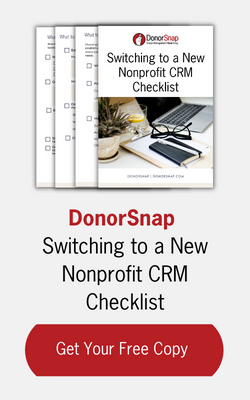How well are you connecting with your contacts and donors? Do you always feel like there is more that you could be doing? Do you have trouble managing the many relationships your nonprofit has? It can be a daunting task to manage the relationships that keep your organization running, but you don’t have to do it alone. A great start to invigorating your relationships is to take some time to create a formal plan on how to manage them. A standardized procedure provides the framework to build confidence in your role and capitalize on contacts that you might not have expected to give so freely.
Brainstorm
First decide what questions you need to ask. What are you doing well so far in cultivating relationships? What have you done not so well? Are you focusing too much on volume? Are you not focusing on volume enough? Each organization is different. There is no “one size fits all” approach to achieving the balance required. Spend some time brainstorming before you get to work on your actual plan. Begin to think about what kind of information you will want to track and how you can do so.
Start small and balanced
If you are a smaller organization, you are probably wearing many hats. Don’t create too grand of a framework that you become overwhelmed and scrap it after a couple of weeks. You can always adjust later if you feel that you have more time to spend. A good starting point might be to meet with 1 or 2 people each week. Be committed to have multiple interactions with each person. It’s easy to underestimate the potential support one person can give. Don’t write off anyone until proof says otherwise.
How can you use the Tickler System in DonorSnap to complement your plan? Using a standardized set of procedures, you will eliminate confusion and streamline efficiency. How often are you going to call each person? How often are you going to email or send a letter to someone? Use pre-defined drop down fields to help organize your system. The more standardized your Tickler items are, the easier it will be to put together reports and to measure your success.
Relationships are a two-way street
One of your main goals in cultivating your relationships may be to increase giving, but that shouldn’t be your only goal. While your organization’s mission is something you should have in common with contacts, make an effort to show you care about that person. In general, people like to talk about themselves. Encourage them to do so! There will be a time and a place to ask for commitments. In fact, the more you ask about them, the more they will likely ask about you, your organization, and how they can get more involved!
Don’t rely on your memory
When you learn something about one of your contacts, take note of it. Use the Notes System in DonorSnap! When used effectively, at a glance, you can see exactly what the status of the relationship is and remember what ways you can best connect with them. If you start to notice patterns, try creating user defined fields to standardize tracking even further. Place them wherever they are relevant, whether it is on the Contacts tab, Tickler tab, or Notes tab.
Evaluate your plan and adjust
Once you put your plan in action, evaluate what works and what doesn’t work. Are you meeting your goals? Do your goals need to be adjusted? Remember that cultivating relationships is an art, not a science. There is always room for improvement. If you keep measuring, reporting, and adjusting periodically, your job will become easier and support for your organization will continue to grow.



